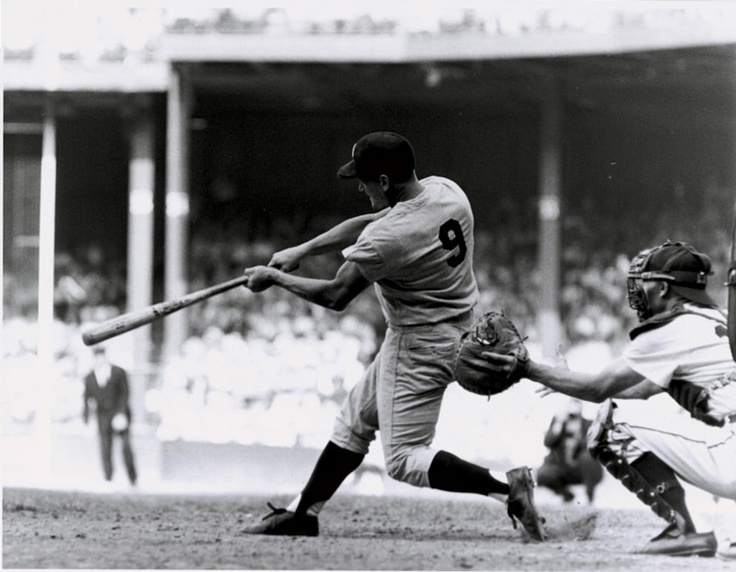Scroll Down to Read Today’s Essay
Subscribe to Baseball History Comes Alive for automatic updates.
As a Free Bonus, you’ll get access to my Special Report: Gary’s Handy Dandy World Series Reference Guide!
Roger Maris Photo Gallery
Yankees Trade Roger Maris to the Cardinals!
“I’ll leave the Hall of Fame to the geniuses that vote on it. I will never get in. I have always known that. I will not argue with you about why or why not I should be elected.”- Roger Maris, speaking about his chances for the Hall of Fame
Fifty-eight years ago today, December 8, 1966, a trade was made between the Yankees and the Cardinals. I think it’s fair to say the Redbirds got the better end of this deal! The Yankees sent two-time MVP Roger Maris to the Cardinals for third baseman Charley Smith, who hit only .224 in his two-year stint in New York. Maris, away from the pressure cooker of the Big Apple, went on to play an important role in the Cards’ successive pennants in 1967 and 1968 and a World Series championship in 1967.
This, of course, gives me the opportunity to say a few words about the career of Baseball’s Reluctant Hero,”Roger Maris, which by the way, was the title of a book on Maris by Tom Clavin.
Roger’s Career Stats
Roger Maris began his professional baseball career in 1953. He reached the major leagues in 1957 with the Cleveland Indians. He played for four teams over his 12-year major league career (1957-1968): Indians (1957-’58), Kansas City Athletics (1958-’59), New York Yankees (1960-’66), and St. Louis Cardinals (1967-’68). Over his career, Maris hit .260 with 275 home runs and 850 RBIs. He was a seven-time American League All-Star from 1959 through 1962; a two-time Most Valuable Player (1960 and ’61); the American League home run, runs scored, and total bases leader in 1961; a two-time American League RBI champion (1960 and ’61); and the American League slugging average leader (1960).
Defensively, he was the American League leader in fielding average for right fielders (1960 and ’64), and also in the National League (1967); and a Gold Glove outfielder (1960). Maris appeared in seven World Series, five with the Yankees and two with the Cardinals, and was a member of three World Series championship teams (1961, ’62, and ’67). His #9 has been retired by the Yankees.
Roger Set New Single-Season Home Run Record!
As is well known, he set a then major-league record 61 home runs during the 1961 season for the Yankees, breaking Babe Ruth’s single-season record of 60. The mark stood until 1998 when Mark McGuire and Sammy Sosa broke it during the tainted steroid era. Ruth’s record was challenged by baseball commissioner Ford Frick, who said that Maris needed to break the record in 154 games instead of the current schedule of 162 games. Frick placed an asterisk after Maris’ name in the record book which became a point of contention for many years.
…But Pays a Stiff Price!
The strain Maris was under that year as he challenged Babe Ruth’s record is well documented and may have contributed to his early death at age 51 in 1985. In 2001, the film 61* about Maris and Mantle’s pursuit of Major League Baseball’s single-season home run record addressed the many unpleasant aspects of Maris’ season, including the hate mail, death threats, and his stress-induced hair loss.
Known best for his offensive accomplishments, Maris’ was also a fine defensive outfielder whose skills are often overlooked. He made a game-saving play in the bottom of the ninth inning of Game Seven of the 1962 World Series against the San Francisco Giants. With the Yankees leading 1-0 and Matty Alou on first, Willie Mays doubled toward the right-field line. Maris cut off the ball and made a strong throw to prevent Alou from scoring the tying run; the play set up Willie McCovey’s series-ending line drive to second baseman Bobby Richardson.
Does Roger Belong in the Hall of Fame?
A case can be made either way. Check out this quote from sportswriter Greg Hansen, criticizing the sportswriters after giving Maris only 72 votes in 1977:
“There are many outfielders in the Hall of Fame who had never won two MVP awards, and no one else had ever hit 61 home runs in a season. To show you what an injustice this is to the man, Maris finished just a notch ahead of Harvey Kuenn, for crying out loud.”
Hansen added that Maris had resented the media’s intrusion on his privacy and that Maris’s tense relationship with the media had affected the voting. Hansen wrote that Maris had told him after the voting that he knew he would never get inducted into the Baseball Hall of Fame.
So today we are glad to shine our baseball stoplight on baseball’s reluctant hero, Roger Maris.
Gary Livacari
Photo Credits: Sports Illustrated The Baseball Book; and public domain
Information: Excerpts edited from the Roger Maris Wikipedia page. Read more at: https://en.wikipedia.org/wiki/Roger_Maris
Statistics from the Roger Maris Baseball Reference page
Subscribe to my Baseball History Comes Alive website for automatic updates and receive Free Bonus Report, Gary’s Handy Dandy World Series Reference Guide.
We’d love to hear what you think about this or any other related baseball history topic…please leave comments below.
Gary Livacari

